Introduction
One of the most famous works of director Quentin Tarantino remains “Django Unchained.” Filmed more than nine years ago, the film retains relevance mainly due to the themes raised. Through a western film, Tarantino explores social issues such as racism, slavery, compassion, humanity, and cruelty. “Django Unchained” remains an attractive work for modern viewers due to the peculiarities of the camerawork and staging of light, which are peculiar to the director’s style. This makes it possible not only to control the audience’s attention and involvement but also to discreetly convey important subtexts, which should become the film’s leitmotif. For example, the control of light in the film is used to convey the theme of slavery more naturally. At the same time, the placement of angles is necessary to covertly inform and power the figures in the frame. This essay discusses in detail the two cinematic techniques — light control and camera angles — that Tarantino used to reinforce the subthemes of the film.
Main body
The visual grammar of the entire film is built on the unique work of Robert Richardson, a three-time Academy Award winner and graduate of the American Film Institute. This is probably why Richardson had the competence to produce such natural and appealing cinematography. One of the first techniques that were critical to the frame was the control of light. Since the film tells the story of the era of black slavery in the American South, it should have been understood that no artificial light sources other than candles or kerosene lanterns had yet been created. For this reason, Richardson chooses to use moonlight and sunlight as his primary illumination: it shines through the windows indoors and accompanies the characters on the road. In addition, we should not forget that one of the central themes of the film was dark-skinned slavery, which is always associated with highly exhausting work under the scorching sun. It is for this reason that Richardson uses the blinding sources of the sun in an extremely emotional shot where the fate of the protagonist’s wife is decided, as shown in Figure 1.
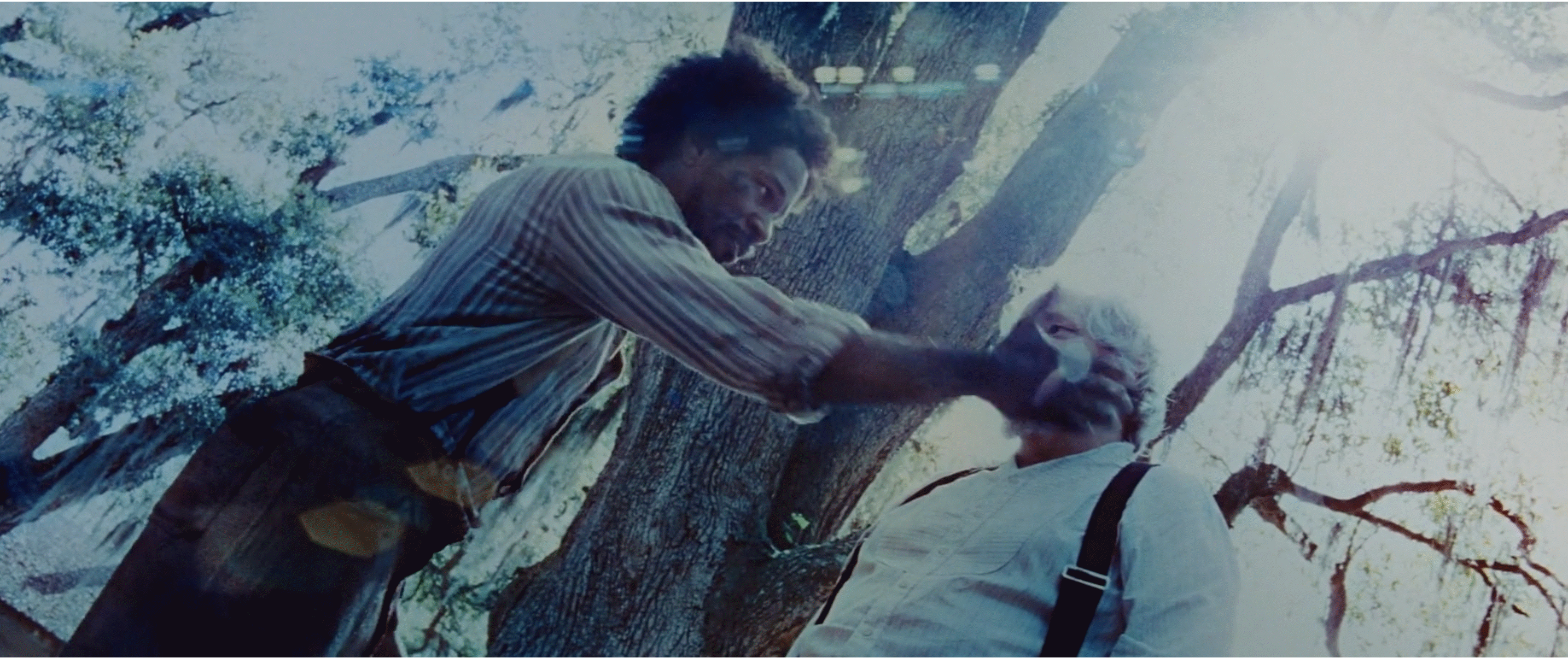
In addition to the light from the sun, another source of illumination is the moon, which has a functional role only at night. It is known that shooting at night requires a careful approach, with an excess of artificial light that can be a problem for the natural perception of the scene. For this reason, Richardson, in one of his first night shoots, uses a large “moon” lamp, pulled high up, which mimics the lighting from the moon. This solution creates a deep night background and plays to the contrast with the Ku Klux Klan menace, as shown in Figure 2.
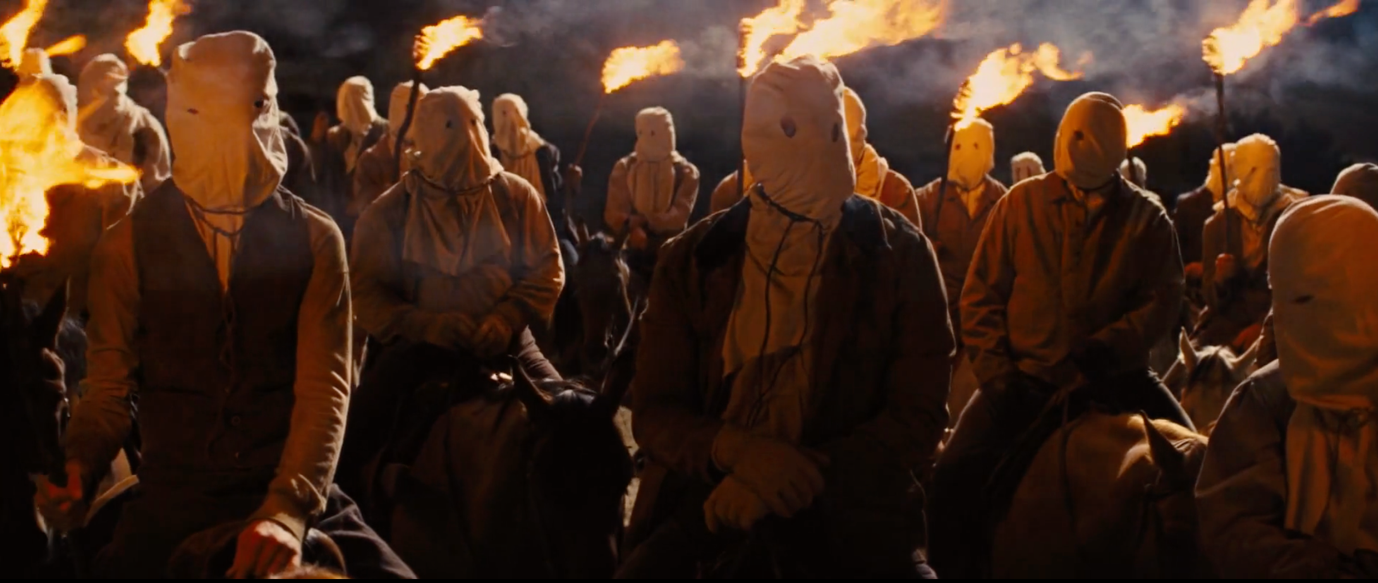
In addition, the problem of black slavery is clearly related to the study of the socio-economic status of communities. In an era when the only sources of illumination were candles and lanterns, the idea that an abundance of such amenities was available only to wealthy aristocrats seems reasonable. Slaves were forced to use one or two candles to maintain at least minimal light in their homes, while wealthy people lit dozens of candles and placed them throughout the room to create sufficient, comfortable room lighting. This is clearly seen in Figure 3, where Leonardo DiCaprio’s rich and violent character Candie uses many candles just for the dining room. This is noteworthy in contrast, the shots conveying an aesthetic of poverty, slavery, and destitution have critically low amounts of lighting (Figure 4) and force the viewer to look more closely into the scene to discover any elements, unlike the excessive environment of the rich house.
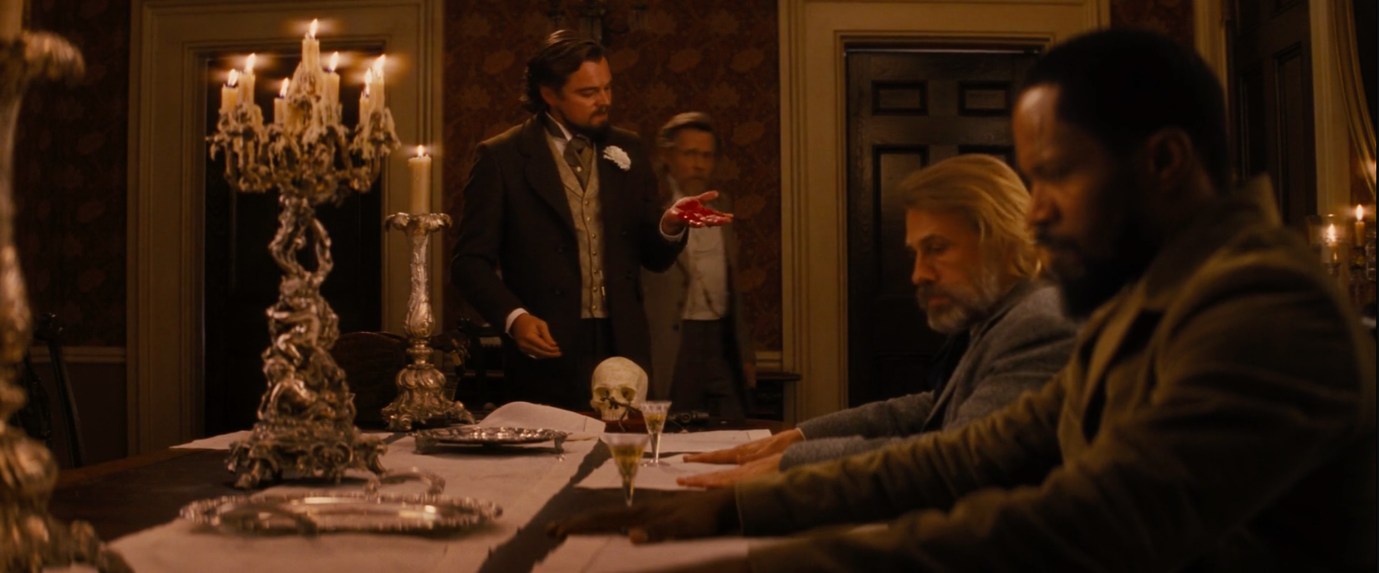
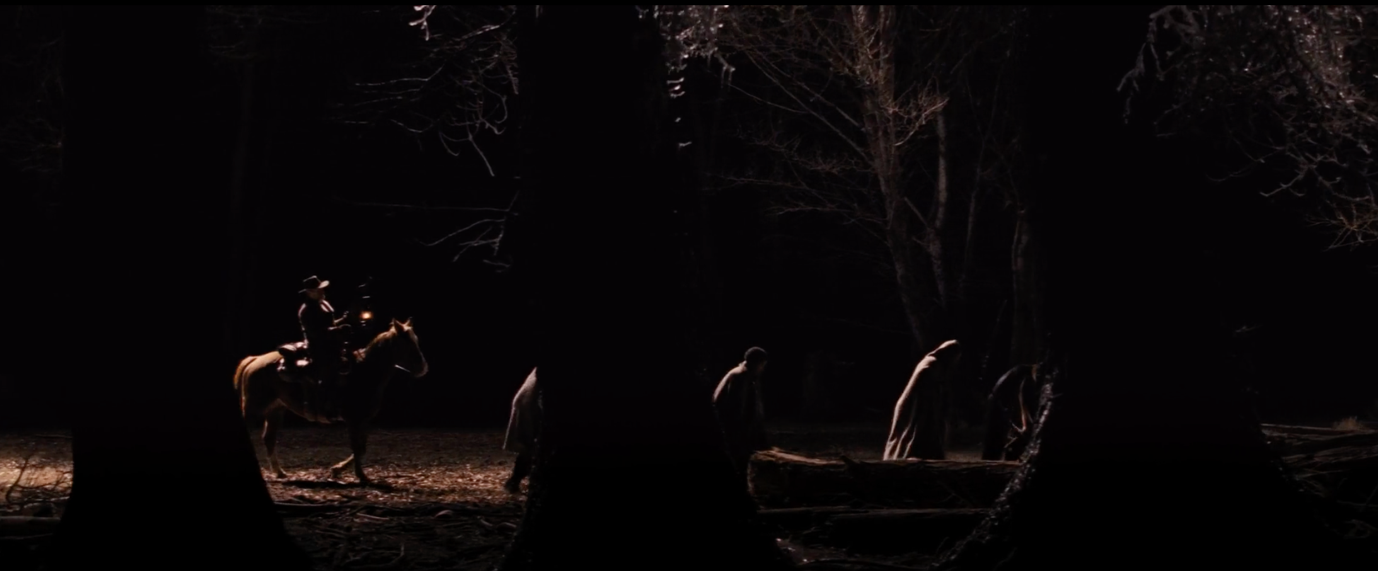
On the other hand, Richardson masterfully uses the arrangement of angles to convey the relationship between the protagonists. The plot of the film is based on effective collaboration between a black slave and a white aristocratic dentist, a unique mix for the era of American slavery. Obviously, the decision to use such a composition of this team involves issues such as respect, humiliation, and bias. The use of the hand-held camera and the placement of its angles play a significant role in conveying the specific essence of the evolving relationship between the characters. Thus, for example, if one looks closely at Figure 5, it is clear that the eye lines of the two protagonists here are placed approximately on the same central axis, which usually indicates their partnership. In this particular shot, however, Schultz holds the direct light source so that Django’s face appears to be brighter. In addition, the camera angle is constructed so that Schultz’s face is fully visible-it is belligerent and determined; the white man’s eyes are raised upward as a signal of readiness. In contrast, Django’s face is almost invisible — although it is more illuminated — and the direction of the eyes accurately indicates the dark-skinned man’s fear of his white master. A similar essence is characteristic of the frame from Figure 1: although Django seems taller than the host in this scene, due to the presence of light on the white man’s side, power is attributed to him.
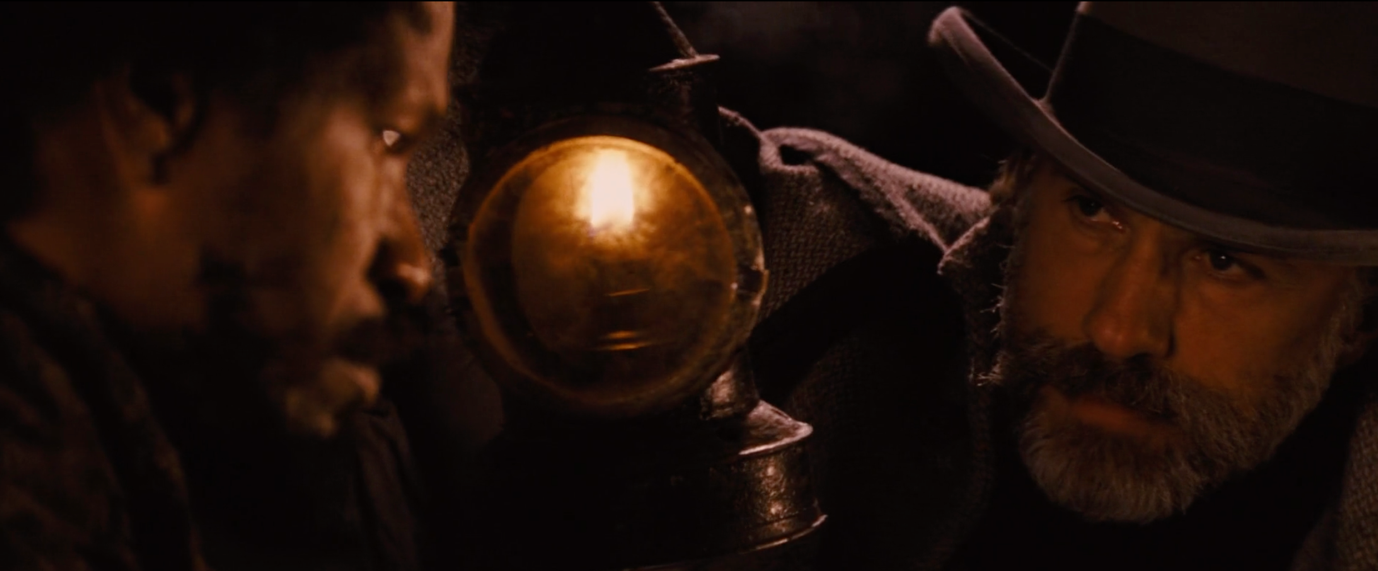
As the story progresses, however, the degree of the relationship between the two men changes. For Richardson, it is no longer necessary to emphasize dominance, but instead, it is important to show a partnership of two protagonists with the same goal. The most commonly used way to achieve the said goal is to place the characters on the same level. For example, Figure 3 makes it clear that slave owner Calvin Candie has the power not only over Django but also over Schultz since, in a particular shot, he is above them. From the viewer’s perspective, it may appear that Candie is reprimanding the two students like a stern teacher, but given all the bloodthirstiness of the slave owner, the entire scene is imbued with the threat of murder. In contrast, Figure 6 reflects an entirely different motif: Schultz and Django are henceforth partners, which means that the camera shows them as two equivalent figures sitting on opposite sides of the central vertical axis. Remarkably, there is no real friendship between the characters, and their final meaning for each other remains unclear to the viewer. The presence of the vertical partition in Figure 6 makes this clear — there will always be a barrier between Schultz and Django, even if they are heading toward the same goal as partners.
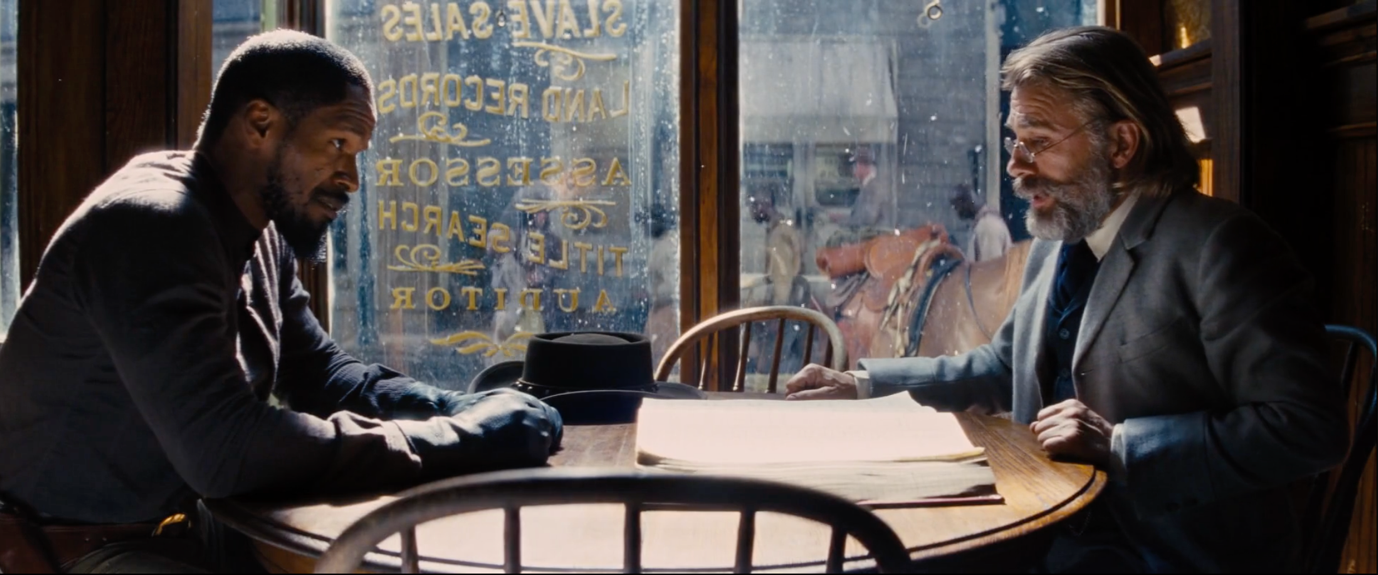
Conclusion
In conclusion, it is worth emphasizing that the final film the audience watches includes not only the coverage of the overall plot but also the use of a multitude of film techniques that allow us to inform the viewer implicitly or explicitly about the context. Understanding how they work allows one to study motion pictures more consciously and understand the rules by which filmmakers and camera operators used specific elements within the frame. In this essay, it has been shown that Quentin Tarantino’s “Django Unchained” is an excellent example for studying film techniques of lighting and camera angles. It has been shown that the film uses these techniques to convey the economic problem of slavery and to show power from the figures in the frame.
Work Cited
Django Unchained. Directed by Quentin Tarantino, performance by Jamie Foxx and Christoph Waltz, A Band Apart and Columbia Pictures, 2012.